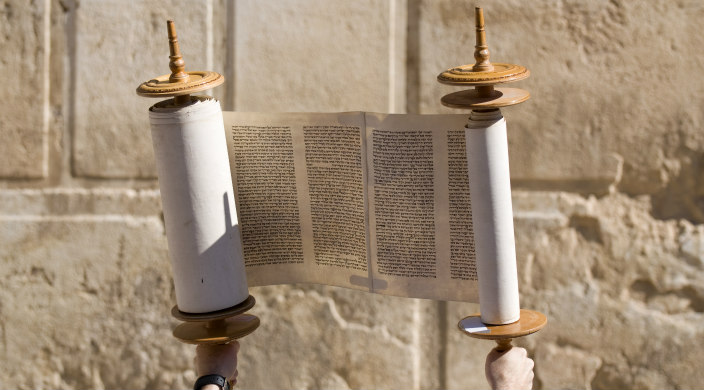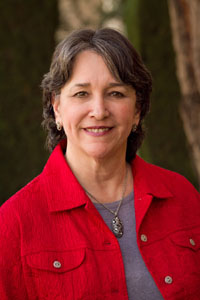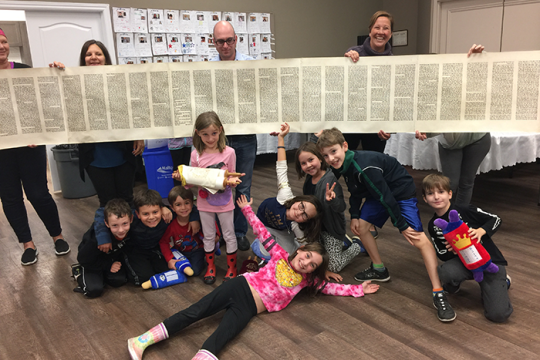
The truth is Simchat Torah is not my favorite holiday.
There. I said it.
It isn’t for lack of love of Torah that I say this. Rather it’s because I’m not a dance-around-with-a-scroll-in-your arms type of person and, for most of my life, that’s what Simchat Torah was all about.
I am, however, someone who completely rejoices in Torah.
No matter how many times I read the same Torah portion, I marvel at the new things I hear and learn. During the past 35 years – as a synagogue educator, a day school director, and the associate dean at Hebrew Union College-Jewish Institute of Religion in Los Angeles – one of my greatest joys has been in teaching and learning Torah with Jews of all ages and backgrounds. I have been privileged to learn from those who are much older and wiser, watch 3-year-olds get excited at the classic biblical stories, and engage with Jewish teens in enthusiastic rounds of “Do you really believe Moses parted the Red Sea?” I have been transformed, too, by learning with and from Jews-by-choice who have brought a completely different – and very refreshing – perspective to our ancient text.
Attending t’filah (a worship service) at least twice a week on campus, I am able to hear students not only read or chant the Torah portion, but also offer a d’var Torah (word of Torah) and a sermon, both of which are based upon some aspect of the weekly portion.
Inevitably, the students challenge me to think about how I define a particular word from the Torah portion or how I understand a certain phrase or verse. Often, I feel transformed, simply because someone else’s perspective on the text nudges my own thinking. It doesn’t matter that a student may be 25 or 30 years younger than me, with far less life experience. What matters is that his or her love of Torah has met mine – and once again, Torah has enriched me.
My bat mitzvah Torah portion was Tol’dot, in which Rebekah cries out in pain with twins in her womb. I'm embarrassed to say that for most of my life, after my bat mitzvah, I was a dedicated fan of Jacob. In my mind, Esau was “ruddy” which, to my 13-year-old mind, meant grimy and mean and inconsiderate. (Hey, I was 13!) Because no one challenged my unwavering love of Jacob, I never gave it much thought.
Until a few years ago.
That’s when one of our rabbinical students gave a powerful sermon in which she asked us to rethink our view of Esau. As a result, my thinking about that one portion and that one biblical personality was transformed. Once again, I saw just how dynamic the Torah is and how much I have to learn from it.
I also love those moments that fill me with awe at the beauty of Torah and that sense of how, again and again, the ancient text seems to speak to my everyday life challenges in 2015. Yet I know it's not magic. Rather, it's about having a relationship with Torah. Just as in any healthy relationship, in our relationship with Torah we strive to listen carefully, to understand, to respect what we do not understand, and to embrace the story of our people.
Although celebrating Simchat Torah by going to synagogue and dancing with the Torah scrolls is wonderful for some people, it always takes me out of my comfort zone. Instead, I challenge us to reimagine Simchat Torah so that it lasts the entire year. We can do so by creating a wide array of activities and programs in which people can “rejoice in Torah” through adult study, art, dance, music, teaching Torah tales to children, or engaging teens in conversations about whether or not they believe Moses did, in fact, part the Red Sea.
These initiatives would culminate in a Simchat Torah celebration at which everyone not only expresses their love of Torah in a manner most meaningful to them, but also encourages the entire community to proclaim: “We celebrate Torah throughout the year and we celebrate every individual Jew’s way to do so!”




